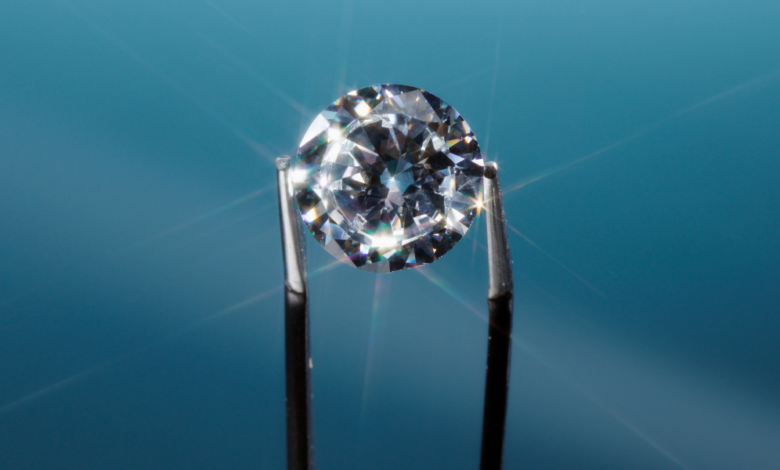Scientists can now grow diamonds faster than you can watch ‘Oppenheimer’


Scientists have figured out how to grow synthetic diamonds in just 150 minutes—and that could be bad news for natural jewels.
In a study published in scientific journal Nature last week, researchers from the Institute for Basic Science in South Korea detailed a new method of growing diamonds using a mixture of liquid metals.
The researchers created a blend of gallium, iron, nickel, and silicon—then fitted it inside a graphite chamber that rapidly heated then cooled the metal, all while exposing it to a mixture of methane and hydrogen gas. The carbon atoms from the methane gas seeped into the melted metal—becoming seeds for the diamonds.
Diamond fragments began appearing after just 15 minutes, and “a nearly continuous diamond film was formed” after 150 minutes, the researchers wrote. The runtime for “Oppenheimer” is a little more than 180 minutes.
This new method is even faster than current lab-growing methods, which can take up to several months. It also uses significantly less pressure and heat, according to the researchers. And it’s a far cry from the billions of years it takes for a natural diamond to grow.
The research is still in basic, early stages, said Rodney Ruoff, the Ulsan National Institute of Science & Technology professor who led the study—but the newly published study enables other researchers around the world to further innovate.
“Time will tell in terms of scalability and cost,” Ruoff wrote in an email to Fortune.
Concocting diamonds in a lab is becoming faster and easier than ever—just as natural diamonds see slumping sales. Natural stones are losing their luster for some young consumers, who increasingly prioritize affordability and sustainability.
Is the future of diamonds synthetic?
In the first three months of 2024, 13.5% of diamond jewelry items sold in the U.S. were made with lab-grown stones, according to Edahn Golan, a diamond industry analyst.
Golan points to three primary reasons lab-grown diamonds are appealing, especially to younger consumers: lower prices, bigger jewels, and sustainability.
For two hypothetical diamonds with a similar appearance, a lab-grown version would be about 80% cheaper than a natural counterpart, according to Golan. Consumers get better value for their money, as they can access larger, flashier stones for lower prices when they shop lab-grown.
The proportion of lab-grown sales in the first quarter of 2024 was significantly higher for engagement rings—43%. The average American gets engaged at around age 30, according to Golan, when they are oftentimes not yet at the peak of their earning power. Proposing with a lab-grown engagement ring makes sense for those still early in their financial journey, Golan said.
“You’re still paying student loans, you have a car loan, and all those things are part of your decision process,” he added.
In order to reach these young consumers, major jewelry retailers are adorning their lineups with lab-grown offerings. Pandora, the world’s biggest jeweler, began offering lab-grown diamonds in 2021. In 2023, the Copenhagen-based company’s revenue from lab-grown diamond sales reached 265 million Danish krone ($38.5 million), and its share price nearly doubled the same year.
On the opposite facet, De Beers, the company that once controlled 85% of the world’s natural diamond supply, reported a year-over-year sales decline of 37% in December 2023. The Wall Street Journal reported last week that De Beers’ parent company, Anglo American, is looking to put the controversial diamond miner and retailer up for sale.
Despite sales troubles, Golan said it is unlikely that lab-grown diamonds would overtake the real thing in popularity for the foreseeable future, as legacy companies like Tiffany & Co. and Cartier uphold the desirability of natural jewels. But he predicts lab-grown stones will continue to rise in the near future.
“Especially if the next few years are challenging economically,” Golan said.
More sustainable?
Lab-grown diamonds are generally considered more sustainable than their natural counterparts—especially considering the well-documented history of human rights abuses in the diamond mining industry.
And while some independent lab-grown jewelers choose to disclose their sustainability practices, many major manufacturers are much less transparent about their supply chains.
The Associated Press reported in February that multiple major lab-grown diamond producers in China and India did not respond to its questions about their sustainability practices. The majority of China and India’s electricity comes from burning coal.
“There is considerable energy used in creating a lab-grown diamond,” said Golan. “However, the question is, what’s the source of that energy?”
Outsiders shouldn’t generalize the entire lab-grown diamond industry as either “good” or “bad” for the environment, said Golan, as sustainability practices vary based on the individual manufacturer.
Golan listed growers in India, Israel, and Namibia that rely heavily on solar energy. Some lab-grown diamond manufacturers also offset their energy use with solar panels, or have employed electric vehicles in their operations, Golan said.
“It’s not a binary sort of thing,” he said.
Source link




